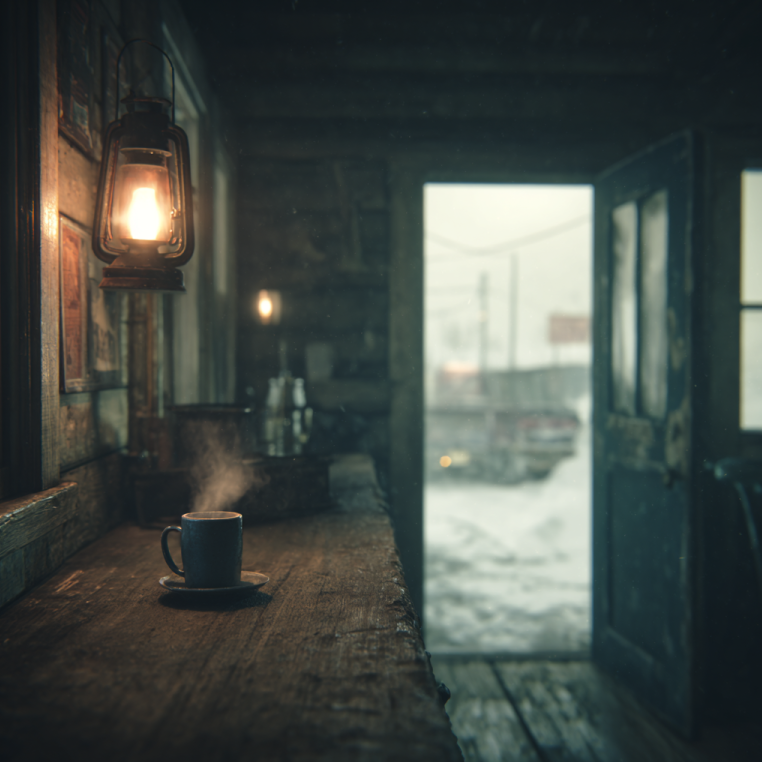On a bone-cold morning in 1935, fur trader and prospector Philippe J. Castonguay stepped into a small roadhouse in Carmacks, Yukon, to do what travelers have always done in the North: thaw out with a cup of coffee. Minutes turned to hours; comfort turned to convulsions. By nightfall, Castonguay was dead. The coroner called it strychnine poisoning. Nearly a century later, the case still refuses to close.
Castonguay was headed toward the Mayo mining district, cash poor, supply rich, and seasoned in the rhythm of river towns and winter trails. In those days, Yukon roadhouses were lifelines: a bunk, a hot plate, a place to hear who’d struck pay dirt or lost a sled in overflow. Coffee wasn’t a nicety; it was heat, hospitality, and a moment to stop watching your breath in the air.
After drinking a single cup, Castonguay fell violently ill. Witnesses described the classic strychnine picture: tightening muscles, rigid limbs, gasping breaths. Strychnine was tragically common then, sold for vermin control and easy to obtain. A few crystals in a cup could stop a man before the stove cooled.
Enter Inspector William D. Dempster of the RCMP, who rode into Carmacks with a short list of questions and a long list of problems. He had a dead prospector, a community that closed ranks in winter, and a piece of evidence that chilled him more than the wind: the coffee itself. Samples were pulled and tested. Even by the standards of the 1930s, the residue told a clear story, strychnine in the cup.
Two names surfaced fast. The roadhouse owner, John A. Larson, had reportedly argued with Castonguay over a business deal. A local trapper, Bill Durocher, had a temper—and a past dust-up with the victim. Motive, meet means. Means, meet the North in winter, where evidence has a way of blowing sideways. The cup had been handled, rinsed, and set aside before the Mounties arrived. Footprints? Half-filled by spindrift. Fingerprints? Good luck with a woodstove, a dish towel, and ceramic that had seen a thousand hands.
Dempster did what good investigators do: he built a timeline, walked the floorboards, and asked the same questions three different ways. He sent the coffee residue on, interviewed travelers who’d been warming their boots at other roadhouses that week, and tried to place who stood behind the counter when the kettle hissed. The result was maddening: strong suspicion, thin proof.
From there the case drifted into lore, and lore never stays small. In one version, Larson slips the poison for revenge. In another, Durocher lays down a grudge with a vial he kept in his kit for wolves and weasels. A more elaborate tale whispers about a “poison ring”, bottles changing hands in the backrooms of river towns, sold to the desperate and spiteful. There’s even the story that Castonguay wasn’t the intended target at all; the cup was meant for someone else who’d been sitting in “his” chair an hour earlier.
Part of why the story holds is that it feels uncomfortably intimate. Poison isn’t a shot in the dark or a fight behind the sheds, it’s an ordinary act turned lethal. You don’t need a weapon if you can reach for the kettle. You don’t need a witness if the room is friendly and the steam hides everything.
It also holds because of the setting. The Yukon in the 1930s was a tangle of trappers’ trails, sternwheeler routes, mining rushes, and winter mail runs. People lived close, with long memories and short tempers. Strychnine lived close, too, on general-store shelves and in trapline boxes. Forensic science was advancing, but the North still tended to decide its own business, especially when the snow was high and the sun was stingy.
Could modern tools crack it now? Maybe. Maybe the cup still exists in someone’s trunk, or a family letter names a name. But cases like this don’t fail because of one missing fact; they fail because of a thousand small ones, the towel that wiped a handle, the witness who moved south, the page that never made it to the file. Time isn’t kind to stories that depend on who poured which cup in a room where everyone was cold and nobody took notes.
And yet: a prospector walks in, a coffee goes down, the world narrows to a final breath. That’s why the mystery endures. Not the grand conspiracy, but the small, human betrayal, someone turned warmth into a weapon. In the Yukon. In a place built to keep people alive.
If you’re the type who reads true crime with a dark roast cooling at your elbow, this one belongs on your list. It’s not just about a poison; it’s about proximity, how ordinary rituals can hide extraordinary harm, and how a single cup can echo for generations.
☕ Pair It With:
Brazil Cerrado , smooth body, nutty depth, low acidity. A steady cup for long reads, cold cases, and the kind of speculation best done by lamplight.
🔗 Related Reads:
The Discarded Coffee Cup — How a single cup of coffee cracked a decades-old cold case.
The Killer Across the Table — When understanding evil means sitting right across from it.
Headcount Coffee, where a warm cup meets a colder case.

0 comments